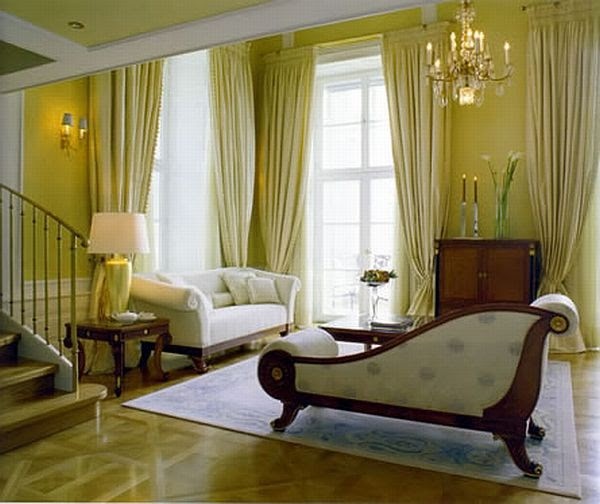Dealing with the possibilities to treat your windows is challenging. Here is a quick briefing that will help you to find right home window treatment.
Where to Start
First, consider the function and not the style. This will limit your options a lot. If you are all right with light filters through then simple decorative kardinad (curtains) without lining will work, but for total darkness and privacy, lined curtains perform well.
Besides being expensive, lining have many other advantages too. The fabric is protected from sun damage enhancing its durable feature. It also adds to the heft and protects against drafts as well as allows the fabric to fall more luxuriously. Interlining curtains (flannel material sewn between face fabric and lining) allow maximum durability, insulation and light blockage.
Fabric & Colour
Texture – Determine the atmosphere of the room. Heavy velvet or silk is a great insulator for formal space, but needs to be dry-cleaned. Washable options include cotton satin and silky rayon blends. Crinkly crushed velvet and billowy linen are generally to be dry clean gives the casual feel. Cotton and wool blends match with all the kinds of décor bringing modern, crisp and neat feel.
Colour – If you desire the curtains to flow with the décor then choose curtains of same hue like the wall, but few shades darker or non-dominant subtle (soft) colour existing in the room. If you wish to pop up then bold colours can add some sensation.
Remember that in spaces where sun light falls through unlined curtain fabrics the colour will fill the room. Therefore, if you select blue colour, it will look creepy but pink can appear optimistic.
Prints & patterns – If your room has patterned furniture, bedding or elaborate rug then bond windows with solid coloured curtains. Alternatively, for solid coloured furniture consider patterned window solutions. For subtle style, you can use small neutral pints like paisley or dots. A large and graphic coloured print that relates to existing décor can be spectacular.
Length and Width
To get the trendy look make the fabrics contact the floor or radiator or sill. Very short curtains seem untrendy and off.
Two approaches that work well
- Just hit the sill or floor – Curtains appear classic and tailored, if the fabric just touches or hovers half inch above the floor. It works well, if there will be lots of opening and closing of windows. Areas like bathroom and kitchen can accommodate this approach where long drapes are not practical.
- Extending a little on the floor – About 1” to 3” extension onto the floor looks more stylish. In formal room, an exaggerated fabric pooling of 6” looks romantic but needs high-maintenance. It will need to be re-fluffed every time the cat lies on it or you vacuum.
Width of the Curtains
When closed, the curtains must look plentiful and drape the windows well. They have to be 2 -2 ½ times window width except if you are hanging the curtains from window frame without any intention to close them decrease the width to 1 ½ times. The pleated curtains have built-in fullness, so their widths match the span to be covered.
Where to Hang the Curtains
- Hanging above window frame – It creates an illusion of tall window, so hang 4” to 6” above window frame.
- Hanging wider than window frame – Extending the rod 3” to 6” on each side makes window feel grander allowing excess light to come in while the curtains are opened.
Author’s Bio:
Jeff Carter is an expert interior decorator and he writes many useful posts about how you can beautify your homes and offices with kardinad or curtains at very affordable costs. They offer all types of blinds and shutters all across Tallinn. Please visit their website for more information.
